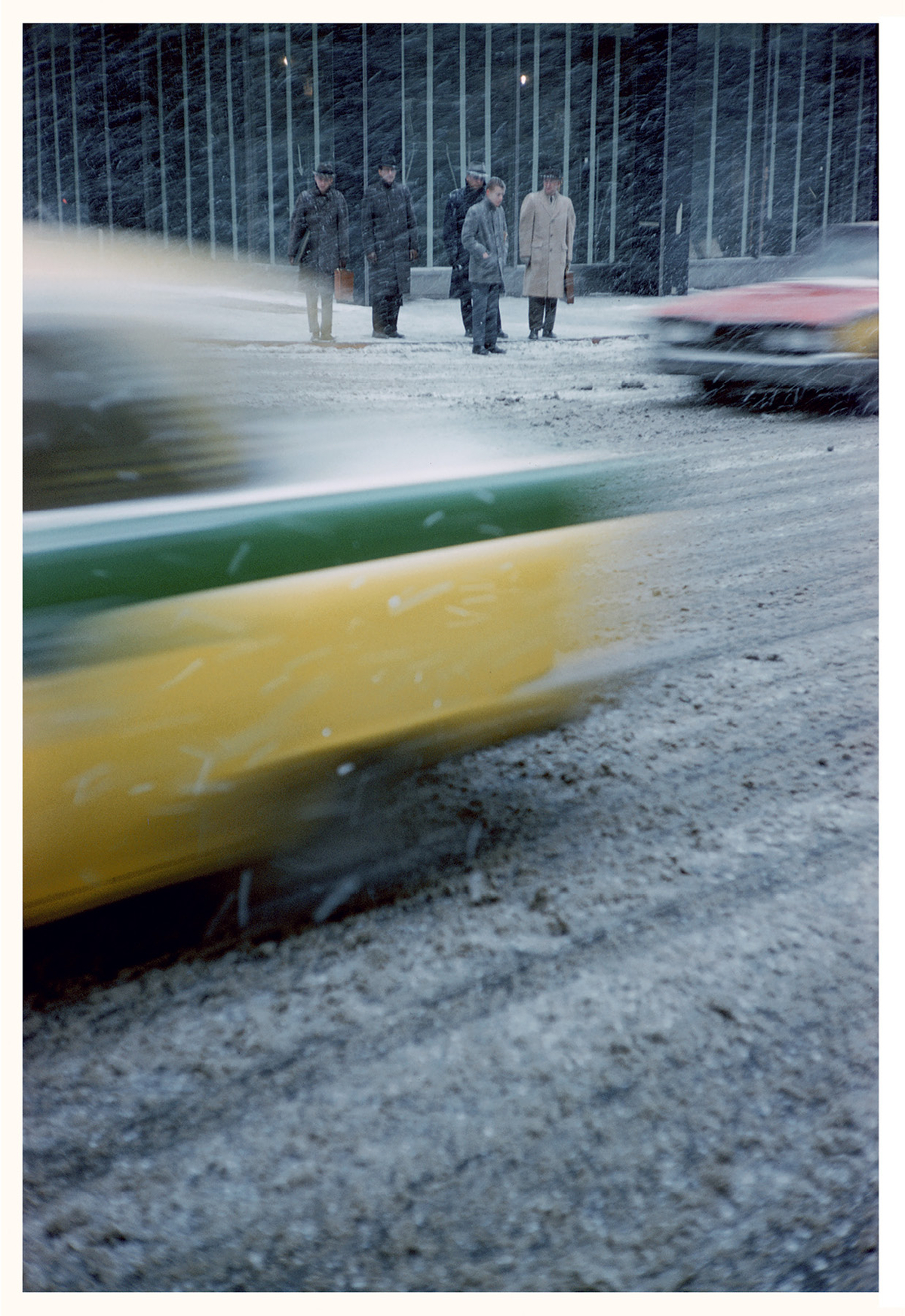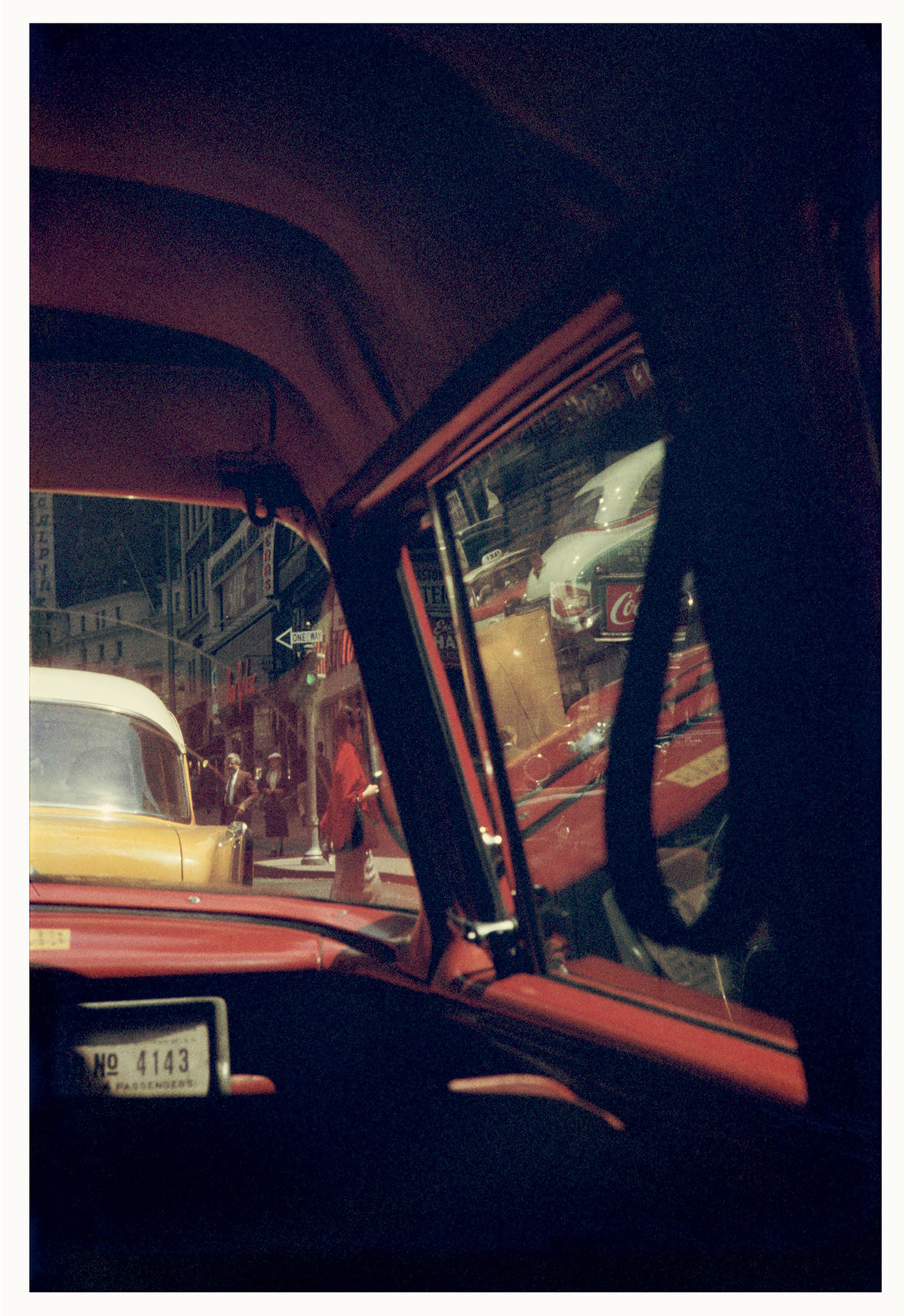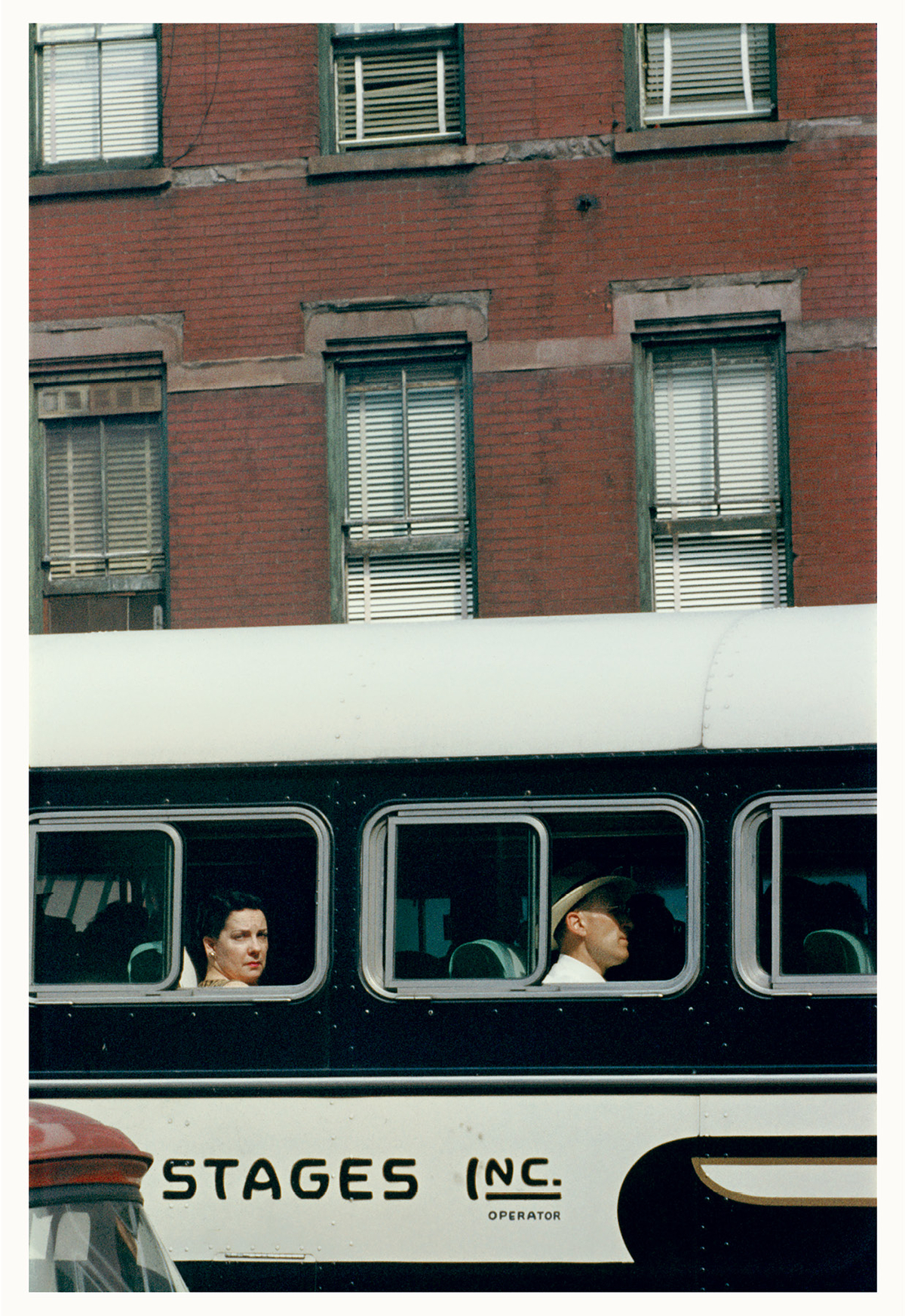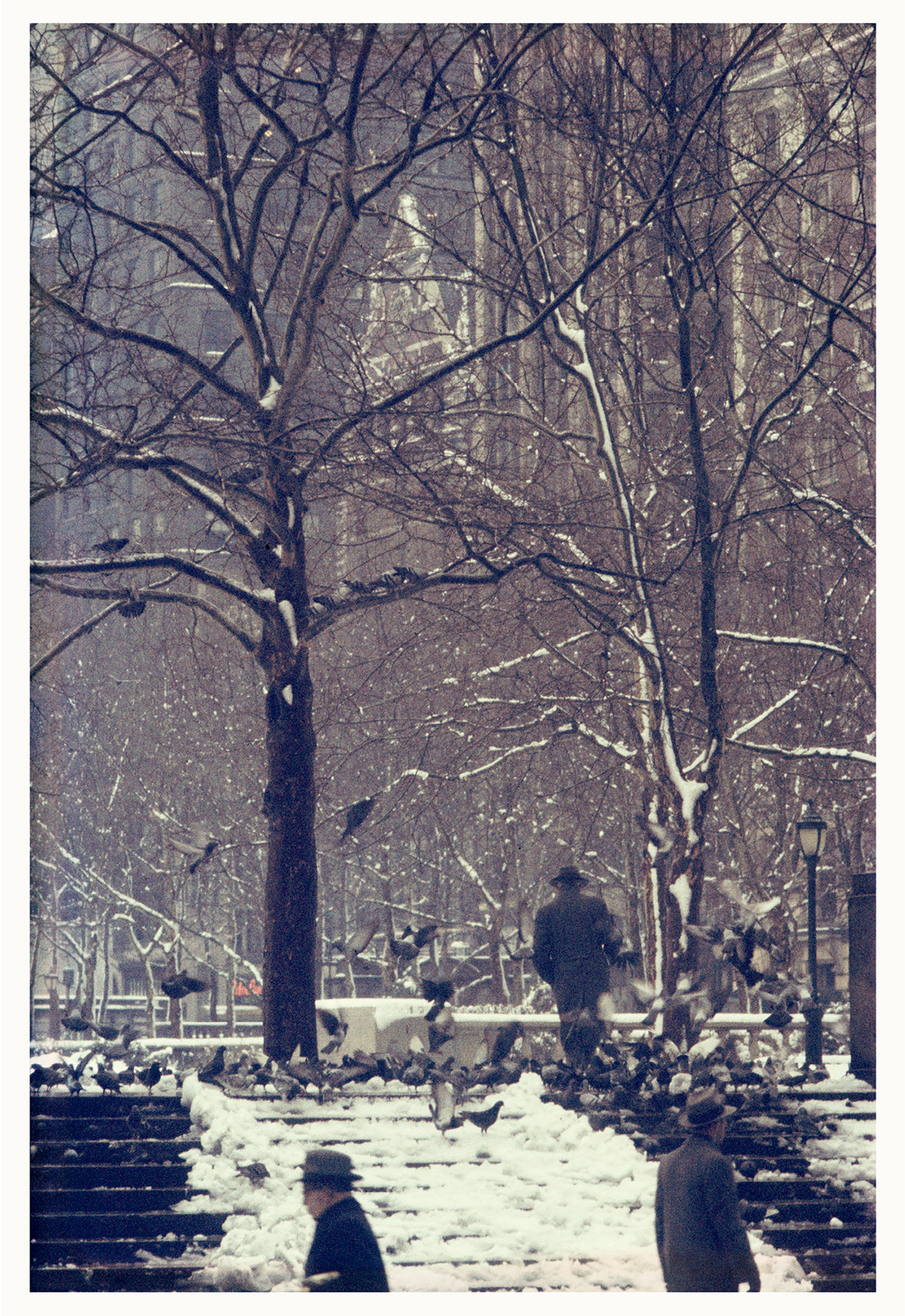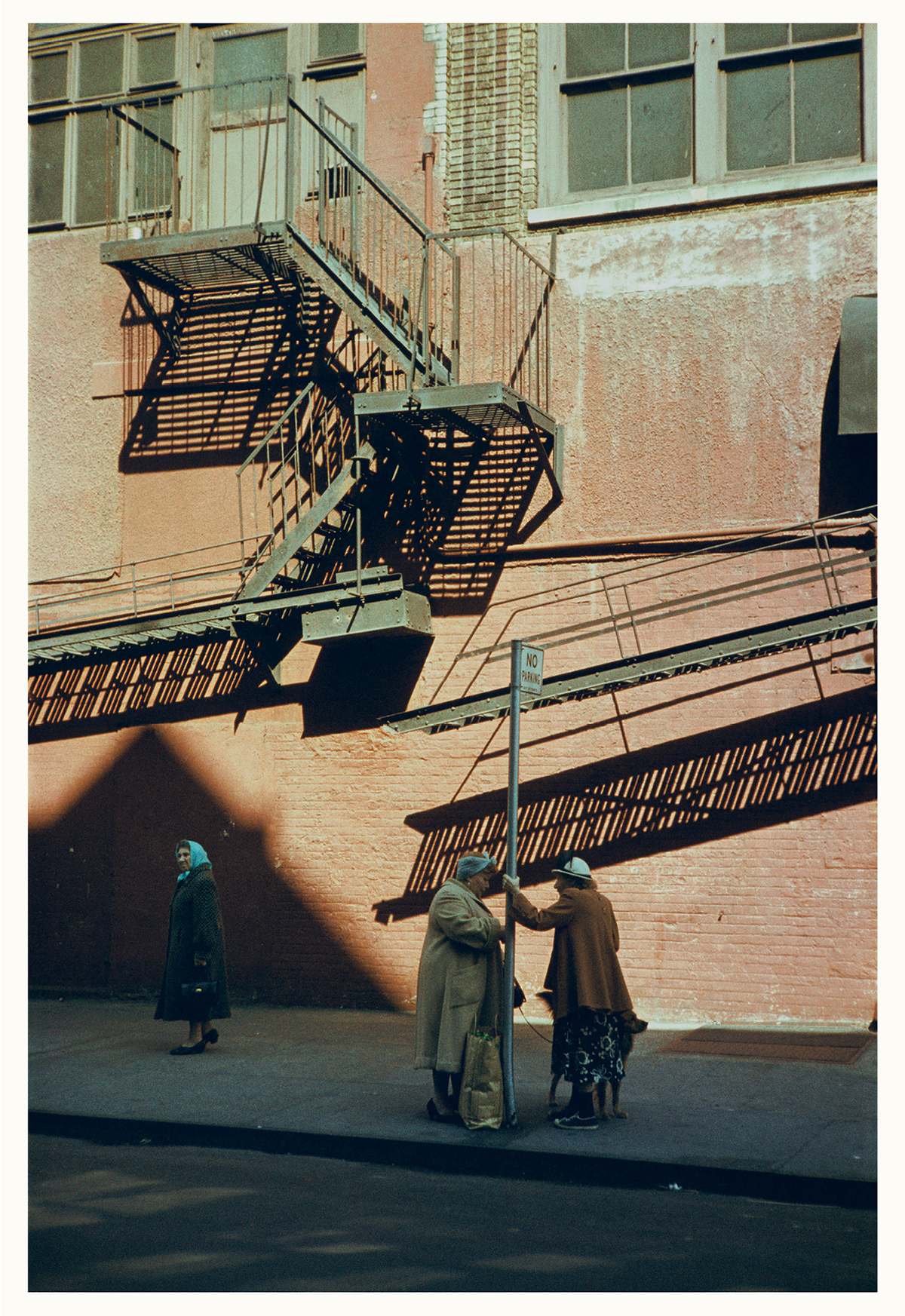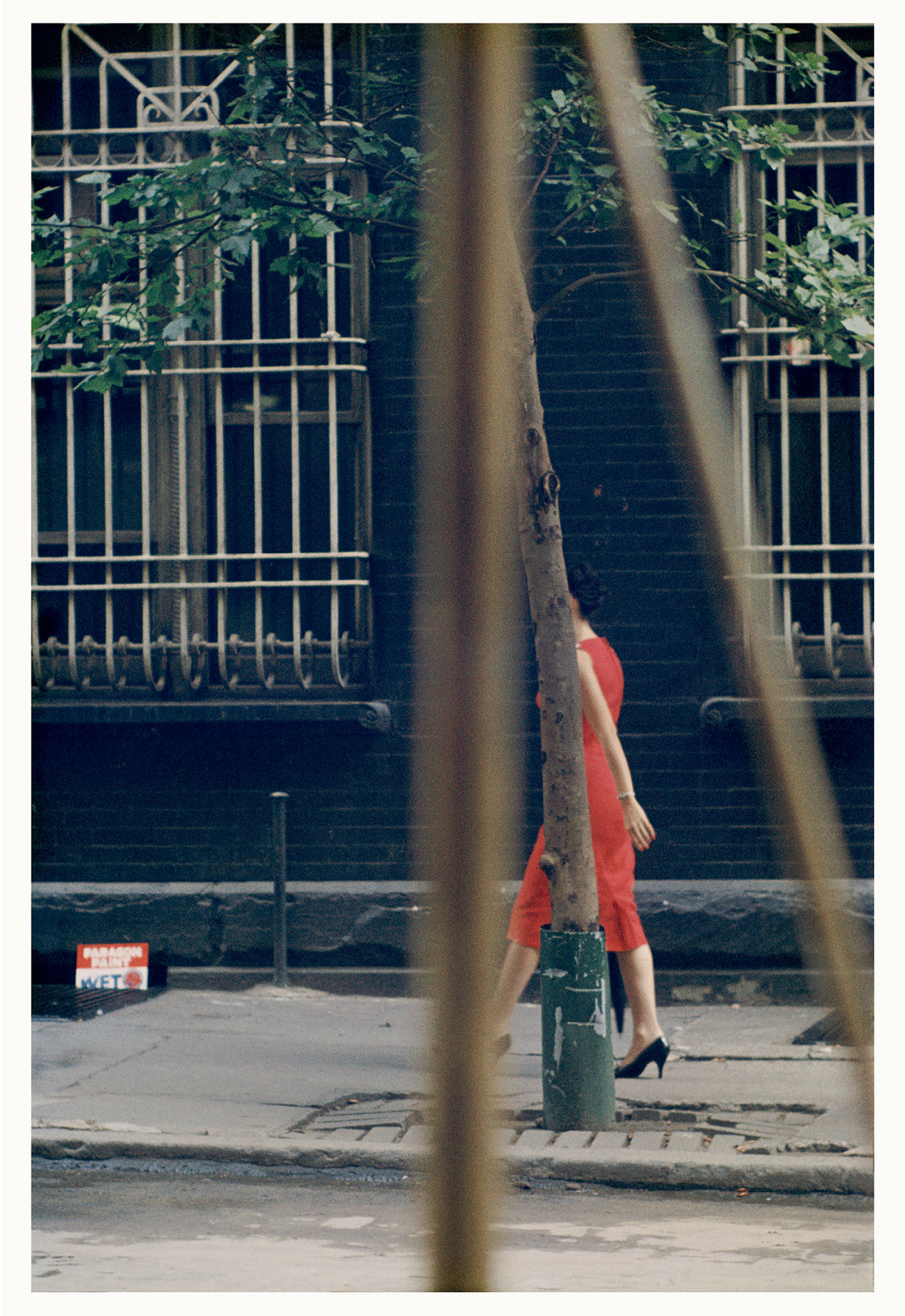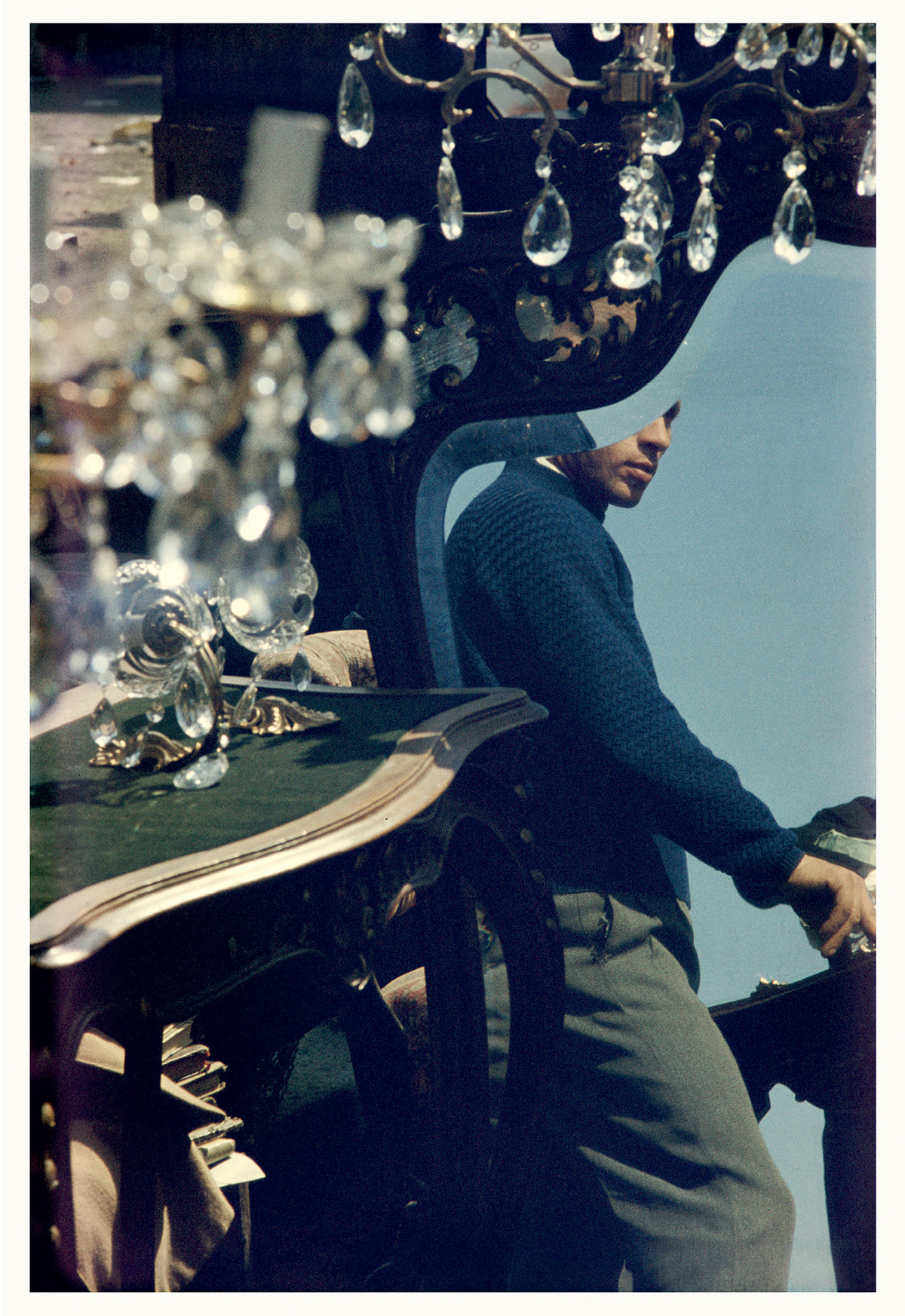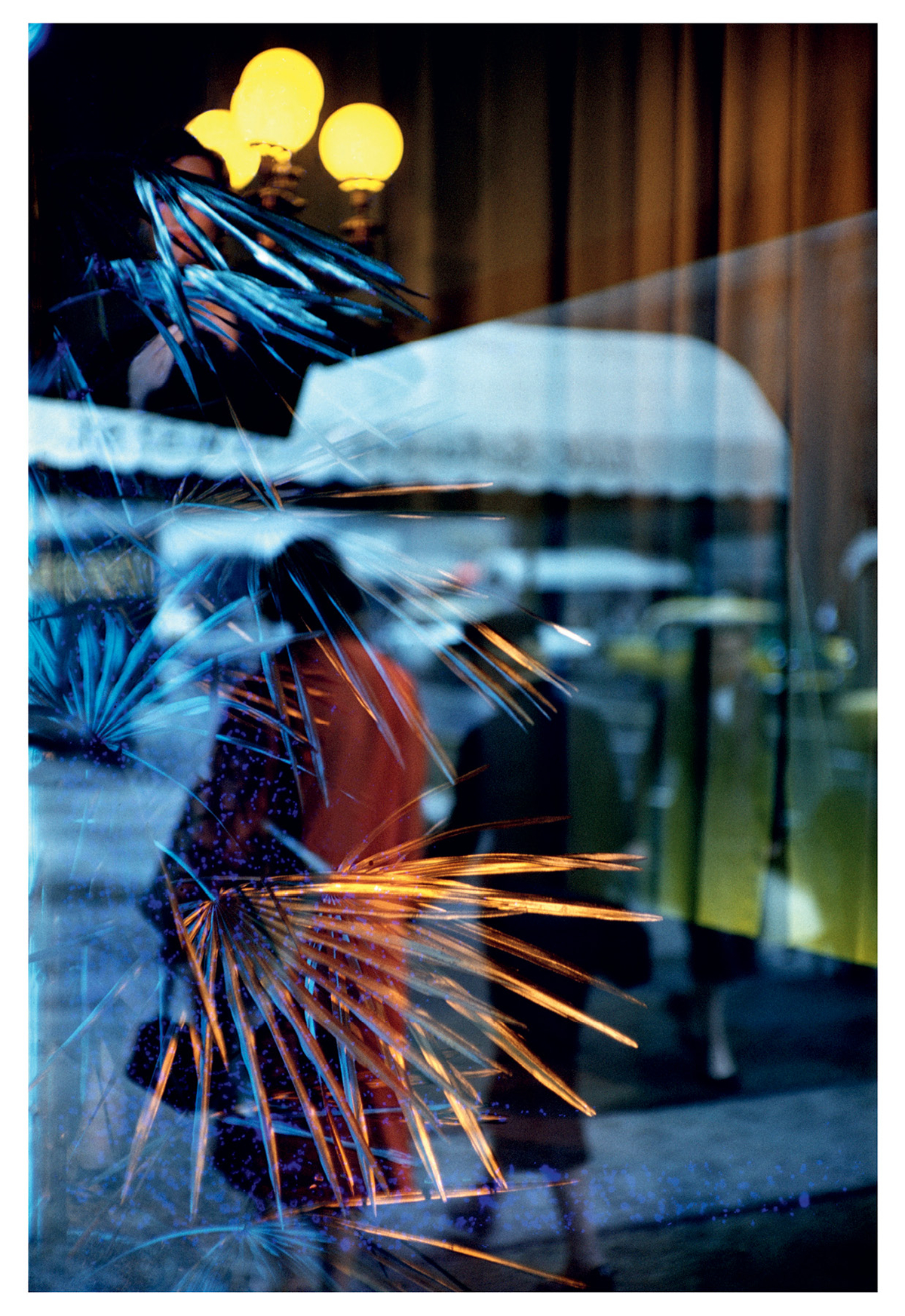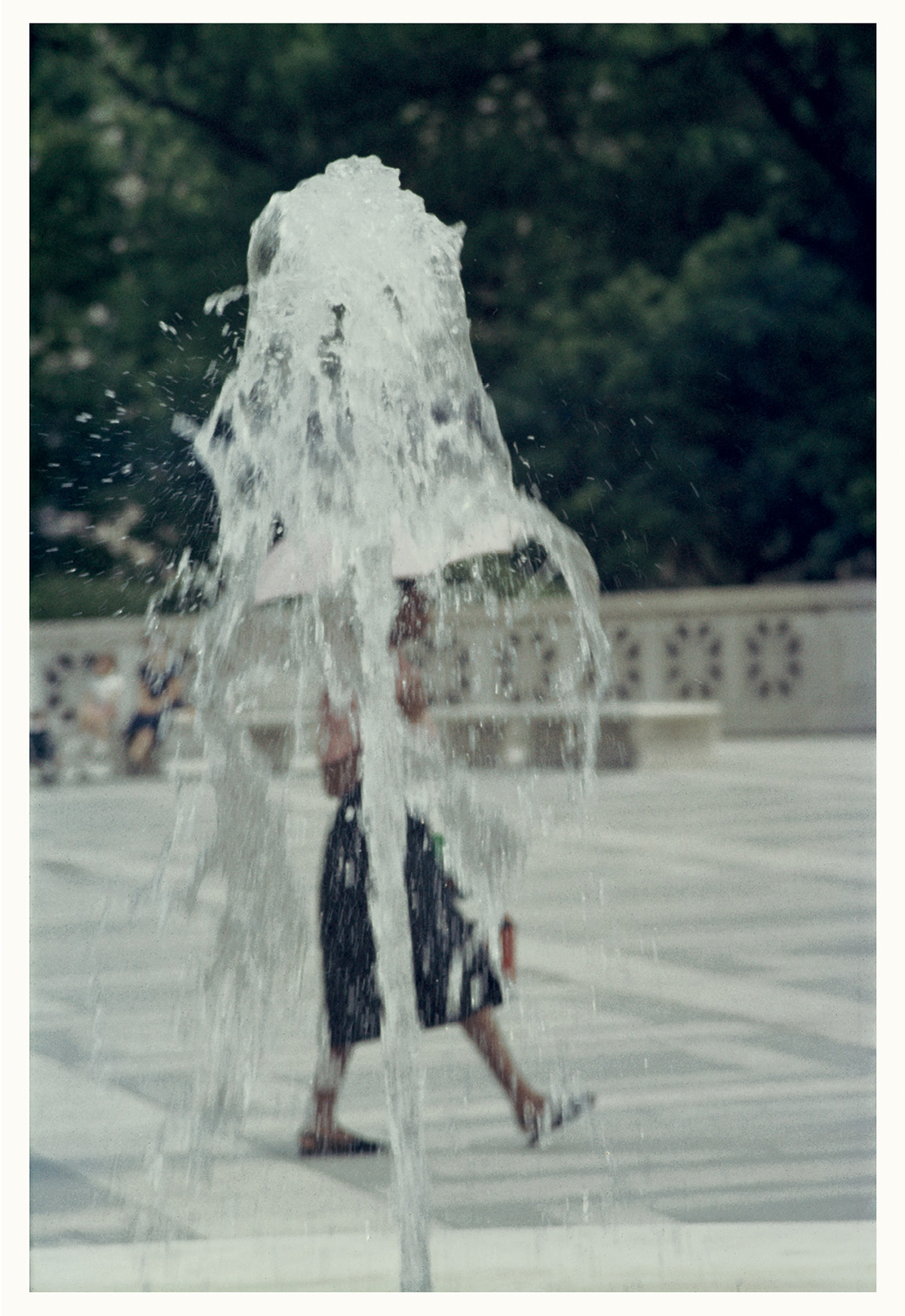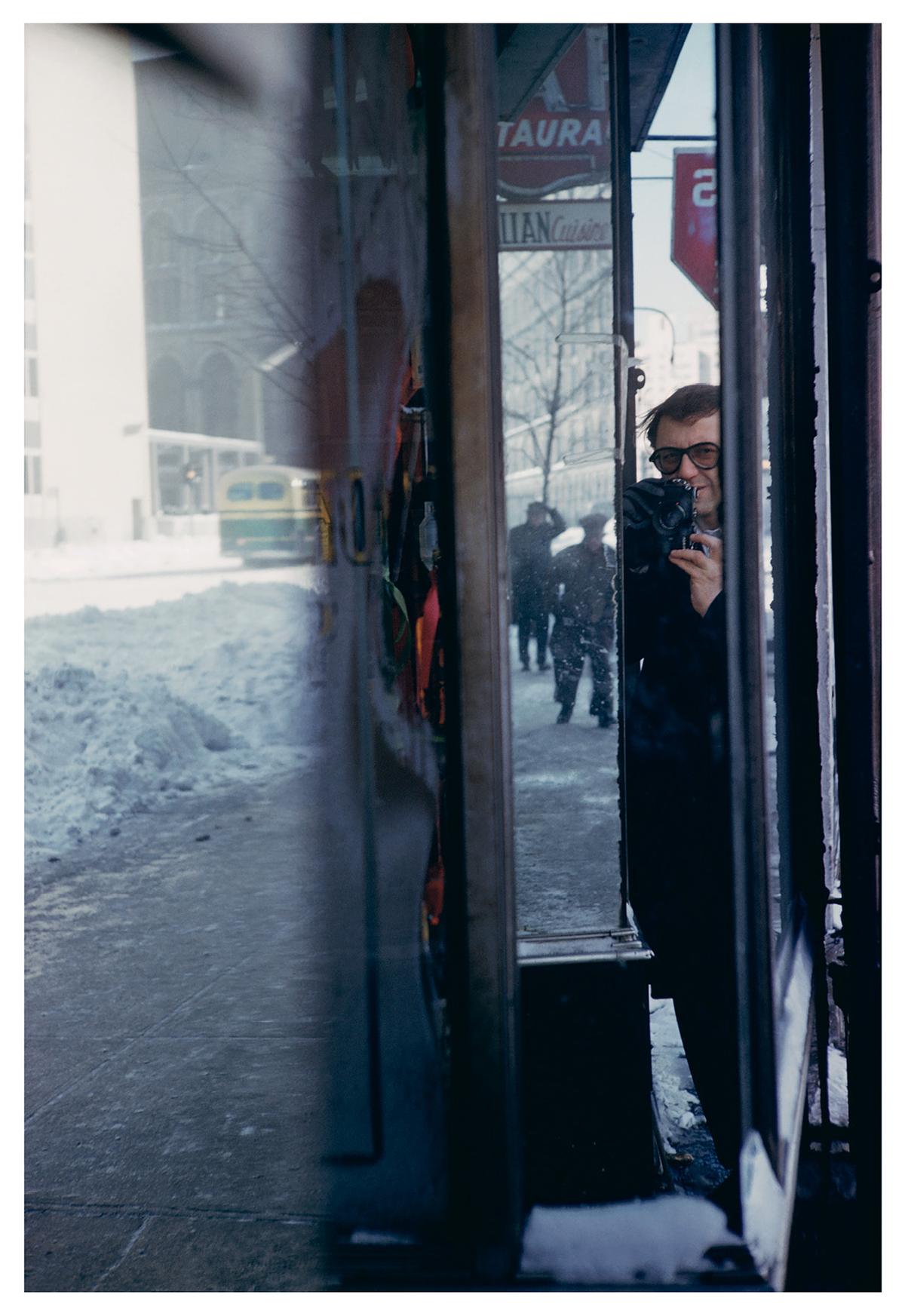It’s quite a task to strike the right tone when admiring the work of the photographer Saul Leiter, who had little if any interest in the typical cravings of the ego-driven artist: praise, fame, success, money. Leiter saw this shiny bundle of worldly accoutrement for what it too often is, scraps doled out to the most enslaved of strivers and workaholics, and he didn’t want to be either. “In order to build a career and to be successful, one has to be ambitious,” he once said. “I much prefer to drink coffee, listen to music and to paint when I feel like it.”
It wasn’t a pose. It was a point of view, and it defined how Leiter lived his life and where he aimed his camera.
In 2013, the documentary In No Great Hurry: 13 Lessons in Life with Saul Leiter came out. Almost 90 at the time, the until then least talked-about, most important photographer still alive looked back on six decades of work taken on the go in the streets of New York, starting in the 1940s. He was, in his last few years, recognized as nothing less than a pathbreaker of revelation, the unassuming creator of unassuming images who had an uncanny way of framing the whir of the city’s bits and pieces—its taxis and pedestrians, weather and infrastructural clutter, shop signs and corporate logos, hard surfaces and soft bodies—as paeans to the unnoticed, overlooked, ignored.
But what made Leiter, who died the same year, an essential new name to drop, along with Diane Arbus, Robert Frank, and Richard Avedon, in any revised description of the New York School was the consensus that it was his early, consistent, and painterly use of color that put paid to the widely held view that monochrome—and monochrome alone!—was the only format that made a photograph worthy of being considered fine art.
Expensively produced books of Leiter’s work followed, chichi galleries mounted shows, and hush-worthy museums added him to their permanent collections. Still, Leiter remained Leiter, the son of a rabbi who barely missed becoming one himself and who seemed he might have taken Solomon’s words to heart that “all is vanity.”
At one point in the film, sitting among the peeled paint and naked light bulbs of his shabby East Village apartment, Leiter says, “I’m not carried away by the greatness of Mr. Leiter.”

A beautifully edited new book of 76 images chosen from some 10,000 slides in Leiter’s archive, by Margit Erb and Michael Parillo, a married couple who run the Saul Leiter Foundation, makes it very hard not to get carried away with Mr. Leiter’s greatness, however. The book’s title, The Unseen Saul Leiter, reads as a pun on one of Leiter’s primary preoccupations: that looking isn’t always seeing.
The fine selection of pictures here were taken mostly downtown between 1948 and 1966, a period in which Leiter created many of his most iconic photographs. The way New York City looked then—men in hats, women in heels, cars with chrome fenders, cigarettes wedged in fingers—is now in and of itself nostalgically fascinating, but the images included in the book exhibit a symbolic power and contain messages that transcend the context of their time and place. The book takes us into familiar Leiter territory—umbrellas, red dresses, rain-dappled windows—only to prove the man all the more remarkable for never seeing a thing the same way twice.
It behooves the observer to be just as vigilant when flipping through this book of one-dimensional images with three-dimensional meanings. Take, for instance, the blurred image of a yellow-and-green cab swooshing through a snowy street at what looks to be rush hour, one evening in 1961. At first it appears to be all action and emotion. But don’t turn the page yet.
Stay a little longer, look a little further, and, in the background, you notice the figures of five men—briefcases, gloves, trench coats. They look so similar that they appear to be the same man. Their feet are planted in the dirty snow, and all of them watch as the cab leaves them in the cold, like a promised job promotion or an ex-girlfriend or the once tantalizing possibility of youth.
That taxi, a painterly gesture of warmth and abstract energy, is going somewhere exciting and fun. The man and his look-alikes are going nowhere, completely frozen.
What they need—what we need—is that little thing Leiter talked about: a hot cup of coffee, and a moment alone.

Saul Leiter took the majority of the photos collected in The Unseen Saul Leiter in downtown Manhattan
Jay Fielden, the former editor of Esquire, is writing a novel

